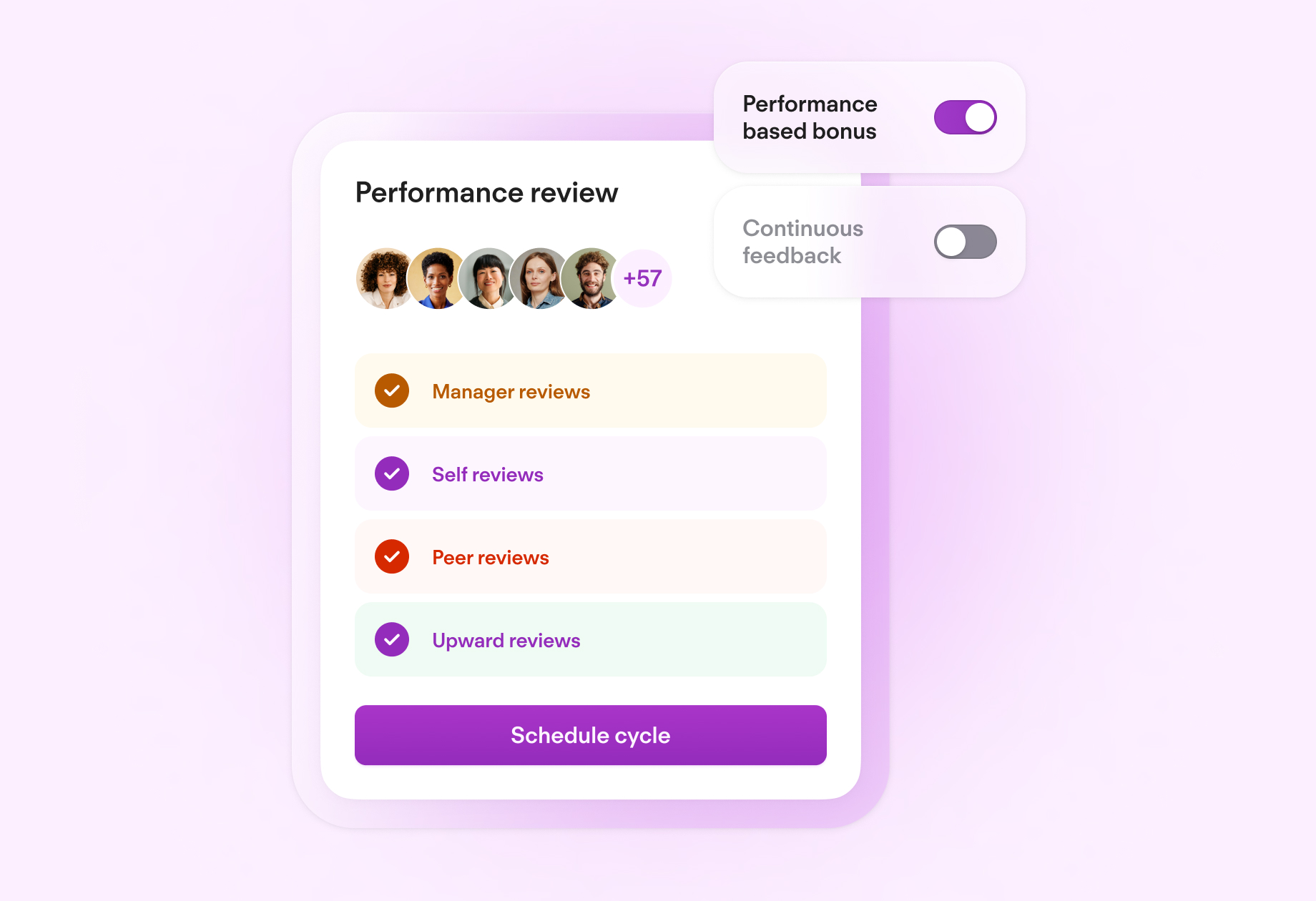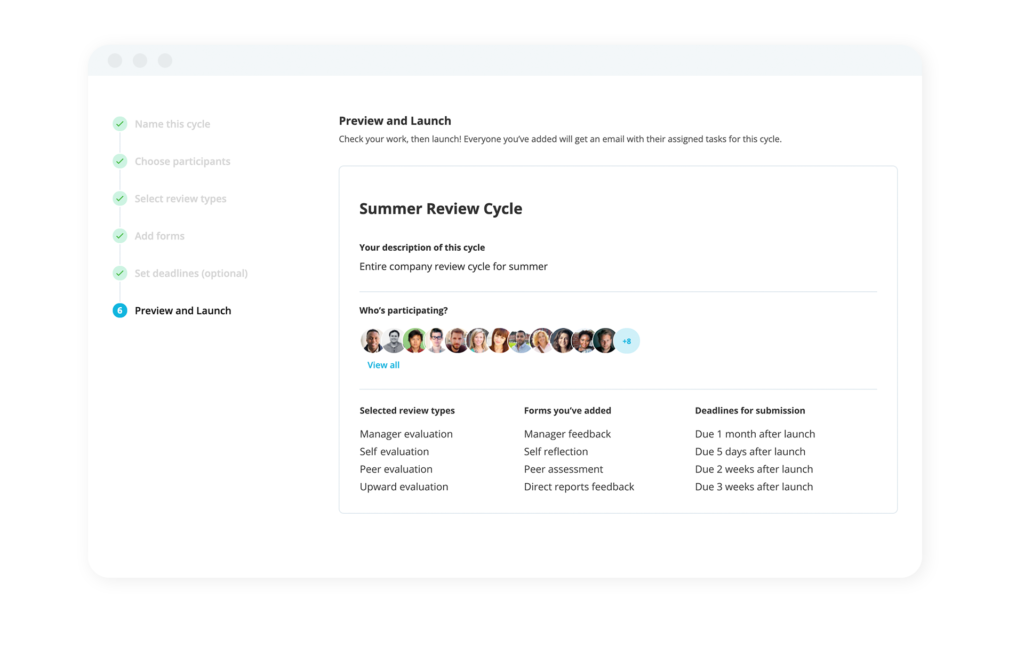Latest Blog Posts
Which Employee Rating Scale Works Best?

Rating employees can be tricky. That’s why many companies use rating scales to analyse employee performance. Read on to discover more about employee performance ratings.
Ready to focus on every element of employee experience? Download our guide.Contents
- 1What are Employee Performance Ratings?
- 2What are the Most Common Employee Rating Scales?
- 3Which Employee Rating Scale Is Best?
- 4Why Should You Rate Employee Performance?
- 5Should You Be Rating Employees At All?
- 6When are Employee Performance Ratings Typically Done?
- 76 Best Practices for Rating Employees
- 8Rating Employees Through Effective Performance Management
What are Employee Performance Ratings?
Employee performance ratings are the tools used to rate employee performance. This term can also refer to records of their performance over a period of time. Employee performance ratings are commonly used to allocate bonuses or raises.
What are the Most Common Employee Rating Scales?
Employees are typically rated on a two-point (binary), three-point, four-point or five-point scale. The four-point rating scale is most commonly used.
Two-Point Scale | Did the employee meet expectations? Yes or No. |
Three-Point Scale | How often did the employee delivery their work on time? Not often | Most of the time | Always |
Four-Point Scale | Did the employee engage well with other team members? Never | Sometimes | Often | Always |
Five-Point Scale | How would you rank this employee’s level of customer service? Poor | Below Average | Good | Very Good | Outstanding |
When it comes to rating employees on a more theoretical basis, we have three key examples of rating systems used: Likert scales, semantic scales and custom scales.
Likert Scales | Likert scales make a statement and then ask the respondent to agree or disagree with it. The most common example is Strongly Disagree - Disagree - Neither Agree nor Disagree - Agree - Strongly Agree. You can also choose an even number of variables if you want to force people not to choose the middle ground. |
Semantic Scales | Semantic scales are like Likert scales, but, instead of naming each step in the process, the two opposite extremes are listed with no descriptors in between. For example, ‘Success . . . . . Failure’. |
Custom Scales | Custom scales are used to analyse whatever you want. For example, Harvard uses a five-point scale to rank employees from 5 (leading) to 1 (not meeting expectations). |
Which Employee Rating Scale Is Best?
When it comes to rating employees, some say a four-point scale is the best. For example, one organisation suggests that, from their research which looked at the distribution of performance responses, a four-point rating scale is best. Three-point scales lack nuance. Five-point scales can be hard to choose between or be subjective.
Why Should You Rate Employee Performance?
Organisations usually rate employees’ performance to determine whether their compensation should change. Usually, a performance benchmark is provided, against which they can be assessed. Alternatively, the rankings can be made before a benchmark is set. Then, once companies know the average performance, bonuses and rewards can be allocated appropriately.
An unbiased rating system can help avoid the risk of discrimination and inform HR leaders’ decisions about organisational talent.
You should also rate employee performance:
To compare employees against their peers and identify top performers
To analyse employees’ performance over time
To get the context that can be discussed during performance reviews
To ensure you’re remunerating employees appropriately
To encourage improvement, based on evidence
To collect data so you can make better decisions about your company’s talent, as a whole.
Should You Be Rating Employees At All?
Not all employees are motivated by the idea of performance. An article by Gallup says that not only does the annual performance review tend to feel forced and awkward, but ‘it usually doesn’t do a lot to help employees get better at their jobs’.
According to Gallup, only 14% of employees strongly agree their performance reviews inspire them to improve. Even more scarily, the American Psychological Association says that traditional performance reviews and approaches to feedback can be so bad that they actually make performance worse about one-third of the time.
In 2012, HR magazine shared the results of a poll which revealed that 98% of staff find annual performance reviews unnecessary. A few years earlier, the Financial Post also reported that ‘Second only to firing an employee, managers rate performance appraisals as the task they dislike the most’.
Have performance reviews improved since then? It doesn’t seem so. In 2019, an article in BBC Worklife said that annual assessments can be wildly inaccurate, not to mention soul-crushing. Perhaps that’s why it’s best to keep things simple when rating employees. The easier it is for managers and employees to rank performance, the less pain and trauma will arise.
Half a decade of insights on employee experience

Our "People Manual" covers all things related to employee experience and developing initiatives that result in more engaged employees. Grab your free copy right now.
Download It TodayWhen are Employee Performance Ratings Typically Done?
Employees are usually rated on their performance at three times:
After a meaningful activity has been completed (for example, a major project is finished)
At the end of a period that is significant for the business (every quarter, bi-annually or on an annual basis)
As part of the annual review process (which may, or may not, be at the same time as financial month-end, quarter-end or year-end).
6 Best Practices for Rating Employees
Employee performance ratings should be fair, equitable, easy for all parties to understand and clear about what each ranked item means. More importantly, it should be easy for managers to decide which item to choose and for employees to know why they were ranked that way.
The following best practices for rating employees are worth thinking about.
1. Make It Easy To Rate Employees
As we shared earlier, performance reviews are often painful and challenging. Making it as easy as possible for managers to rate employees reduces the time involved. Using objective assessment tools also reduces the decision-making burden on managers, improving fairness and reducing potential prejudice.
2. Make It Objective and Fair
Biased reviews don’t help anyone. At best, they make some employees feel bad. At worst, they may be used as evidence in a discrimination case. Standardised feedback forms will allow for an honest performance review and reduce bias.
3. Document and Store Employee Ratings
Ensure employees’ performance ratings are tracked in a system that is easy to use and navigate. The less time employees and managers have to spend on finding, completing and retrieving rating-related documents, the better.
4. Ensure Your Ratings Can Be Analysed
Creating, storing and analysing numerical ratings makes it easier to see employee trends. These important data points don’t just help improve employee performance; they can also help you compare and analyse group performance (for example, teams in different regions).
5. Don’t Stop With the Rating
While it’s great to reflect on, document and analyse employees’ performance rationally and without bias, that’s often not very helpful for employees who want to improve their performance. Or, for that matter, for employees who aren’t performing but don’t understand why.
Make sure that any performance development review allows enough time to discuss what went well, what didn’t, and what could be improved. So, use scales to rate employees by all means – but please don’t stop there! Make sure you’re providing several types of feedback.
6. Provide a Framework to Contextualise Ratings
Why was someone ranked 3 out of 5? What should they have done differently to improve their score? Good employee rating systems also show the difference between the score levels. They can even include recommendations. For example, employees ranked 3 out of 5 should be coached, those ranked 4 out of 5 should be rewarded (but still encouraged to improve), and those ranked 5 out of 5 might be rewarded and encouraged to coach or train others.
Rating Employees Through Effective Performance Management
Personio’s Performance & Development feature helps HR professionals, line managers and leaders track talent from every angle with 360-degree feedback, set up automated performance cycles easily and keep track of progress.
It also allows you to set clear goals for visible improvement and drive employees to new heights. Find out more by booking a demo or start your free trial today.

